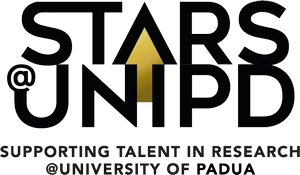
STARS Grantee: Chiara Giorio
 Project: MOCAA
Project: MOCAA

Department: Chemical Sciences
Total Contribution: Euro 140.000
Call: STARS-2017-StG
Project Duration in months: 24
Start Date: 15/03/2018
End Date: 14/03/2020
MOCAA - Metal-Organic Complexes in Atmospheric Aerosol: formation processes, properties, and health impacts
Atmospheric aerosol (the group of all small dusts suspended in the air that cannot be seen by naked eye) is a pollutant of major concerns for the quality of the air we breathe. The northern Italian valley is particularly problematic in this respect, where orography and meteorological conditions do not favour the dispersion of emitted pollutants which remain trapped at low altitudes causing deterioration of air quality. Despite this air quality issue is well known, the toxicity mechanisms are not well understood but it is generally recognised that metals, emitted by vehicular traffic and industrial activities, are key components in exerting adverse health effects. One mechanism by which metals can induce adverse health effects is through their ability to deplete antioxidants in the lung (our first defence mechanism) thus causing a health condition called “oxidative stress”. Their ability to deplete antioxidants in the lung is directly linked to their solubility in the lung fluids.
The MOCAA project aimed to make a break-through in our understanding of the chemical mechanisms that occur in the presence of water droplets in the atmosphere (e.g., clouds and fogs) that can increase the solubility of metals and to study the impacts of such mechanisms on particle toxicity.
The results showed that the presence of water droplets, through the well-known frequent fogs in the northern Italian valley, increases the solubility of metals, making them more available to deplete antioxidants. Considering this mechanism is of paramount importance in planning effective policies for air quality improvement in line with the United Nations’ goal of reducing the number of deaths and illnesses from air pollution.


